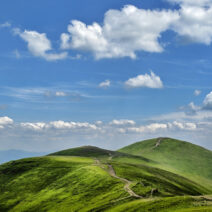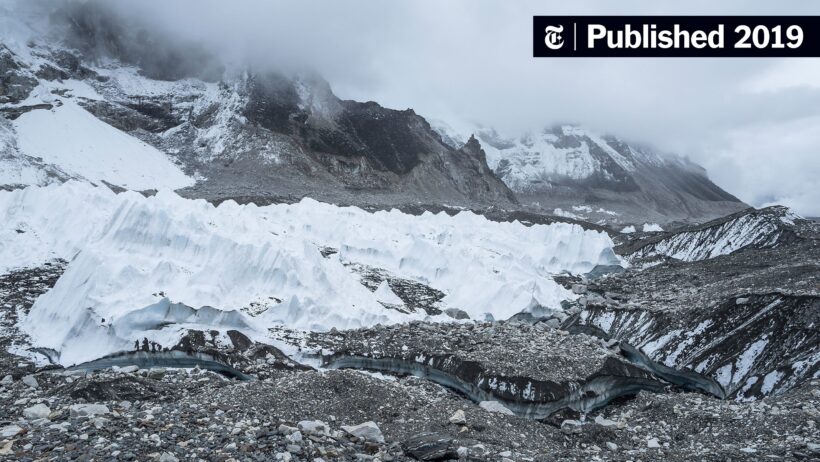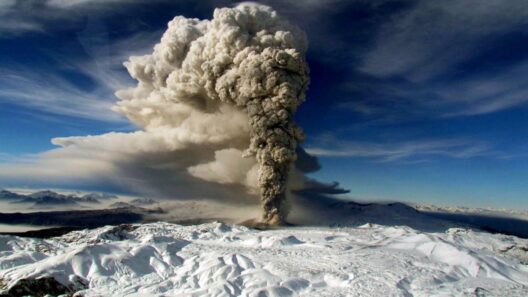The Himalayas, a majestic range that stretches across five countries—India, Nepal, Bhutan, China, and Pakistan—has long captivated human imagination with its soaring peaks and breathtaking vistas. This geological marvel not only represents the highest point on Earth but also serves as a vital resource for millions who depend on its rivers and ecosystems. However, a pressing question emerges in the face of scientific inquiry: Did the rise of the Himalayas coincide with global warming? The answer may not be as straightforward as one might hope.
To understand the relationship between the rise of the Himalayas and global warming, it is imperative first to delve into the geological history of the region. The Himalayas were formed approximately 50 million years ago as a result of tectonic plate collisions, primarily the Indian Plate’s northward movement against the Eurasian Plate. This powerful interaction caused immense geological upheaval, resulting in the uplift of the Himalayas to their current heights. Thus, the formation of this colossal mountain range predates human existence and the industrialization era that is often associated with climate change.
However, the interest lies not purely in the formation but in the ongoing evolution of the region. The Himalayas are still rising, although the rate of uplift can vary across different areas. Geological studies suggest that the mountains continue to grow due to tectonic forces; meanwhile, erosion caused by glacial activity and precipitation steadily wears them down. This dynamic interplay between uplift and erosion creates an ever-changing landscape, profoundly impacting local climates and ecosystems.
In recent decades, scientific research has drawn connections between climate change and the geological features of the Himalayas. One observation is the melting of glaciers, which has been accelerated by rising global temperatures. The glaciers in the Himalayas—often referred to as the “Third Pole” due to their vast ice reserves—are crucial water sources for millions of people downstream. These glaciers are retreating at alarming rates, prompting concerns about future water availability and the potential for catastrophic glacial lake outburst floods.
This has led to a crucial point of inquiry: While the rise of the Himalayas occurred millions of years ago, could the climatic effects stemming from recent global warming intensify geological processes? The ongoing rise of the Himalayas happens in the broader context of climate fluctuations, including both natural and anthropogenic influences. As global temperatures increase, the destabilization of permafrost and alterations in precipitation patterns may contribute to further geological changes in the region.
A fascinating aspect of this inquiry lies in the geological response to rapid climatic shifts. Earth’s surface is not a static entity; rather, it is subject to intricate feedback loops that can manifest in unexpected ways. As glaciers and ice caps retreat due to warming temperatures, the reduced weight on the Earth’s crust can cause isostatic rebound—the gradual uplift of previously compressed land. Geologists have noted instances of this phenomenon in the Himalayas, suggesting that ongoing climate change could indeed influence the region’s geological activity.
Moreover, the notion of climate change impacting geological processes introduces a multidimensional discourse surrounding the implications of global warming. The Himalayas are enmeshed in a web of biodiversity, cultural histories, and ecological systems, all of which are now bearing the brunt of climate modification. Changes in temperature and precipitation are altering monsoon patterns, threatening agriculture, and jeopardizing local livelihoods. The intersection of geological uplift and climatic alteration has reached a point of urgency as communities strive to adapt to the changing landscape around them.
While the origins of the Himalayas lie in events of a geological age, the ramifications of contemporary climate change are plaited into the narrative of their ongoing evolution. This duality emphasizes the relevance of interdisciplinary approaches in environmental science—geology intersecting with hydrology, meteorology, and socio-economic studies to paint a holistic picture of the challenges faced in the region.
Addressing the observation of rising global temperatures alongside Himalayan evolution calls for introspection regarding global responsibility. As a key barometer for the health of our planet, the Himalayas serve not only as an indicator of climatic shifts but as a call to action. The fate of this mountain range encapsulates broader environmental issues and underscores the urgency for global cooperation to mitigate climate change and its multifaceted impacts.
In light of these complexities, the need to reconcile human activity with the movement of the Earth comes into stark relief. Innovations in sustainable practices, conservation efforts, and policies aimed at reducing carbon emissions could, if effectively implemented, help mitigate the rate of global warming and subsequently its effects on the Himalayas and beyond. Empirical data gathered from Himalayan studies may inform these endeavors, guiding strategies that respect both the geological heritage and the ecological significance of the region.
In conclusion, the rise of the Himalayas and global warming are interconnected in a tapestry woven from geological history, climatic realities, and human responsibility. As scientific understanding evolves, so too does our comprehension of the delicate balance that sustains this vital region. Protecting the Himalayas is not merely a matter of preserving breathtaking landscapes; it is an intricate challenge that necessitates immediate global action towards a sustainable future for generations to come.







